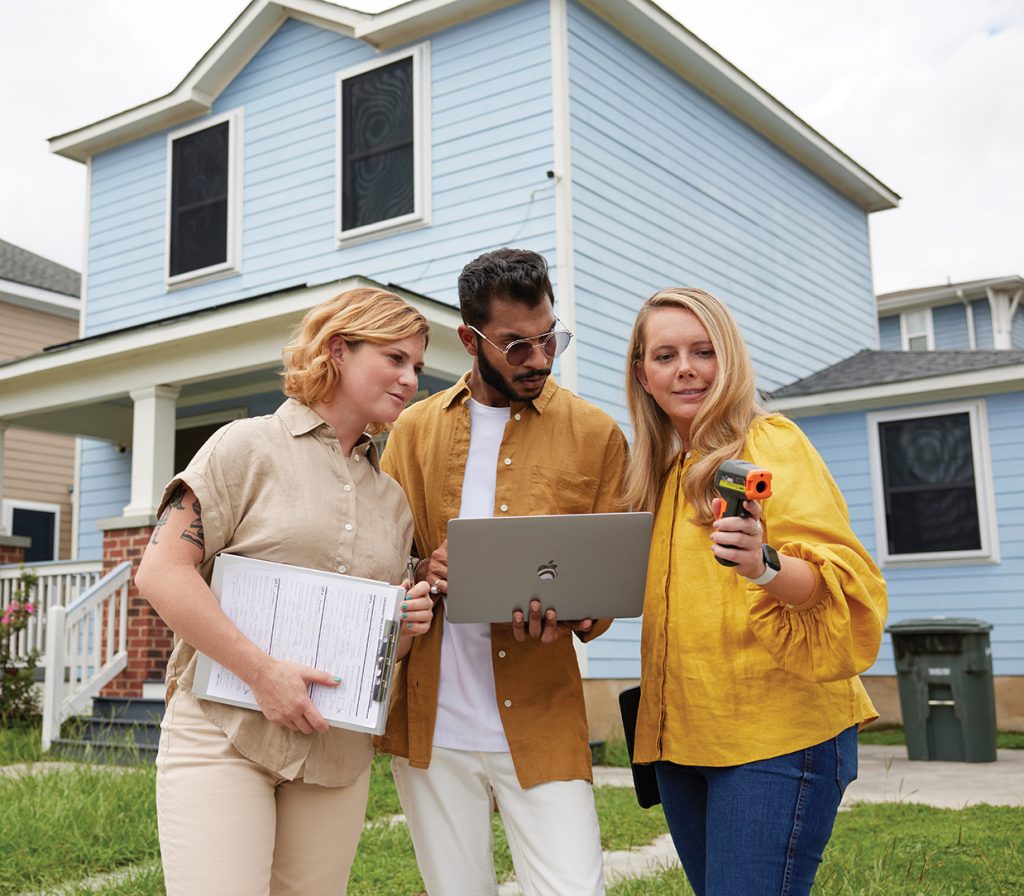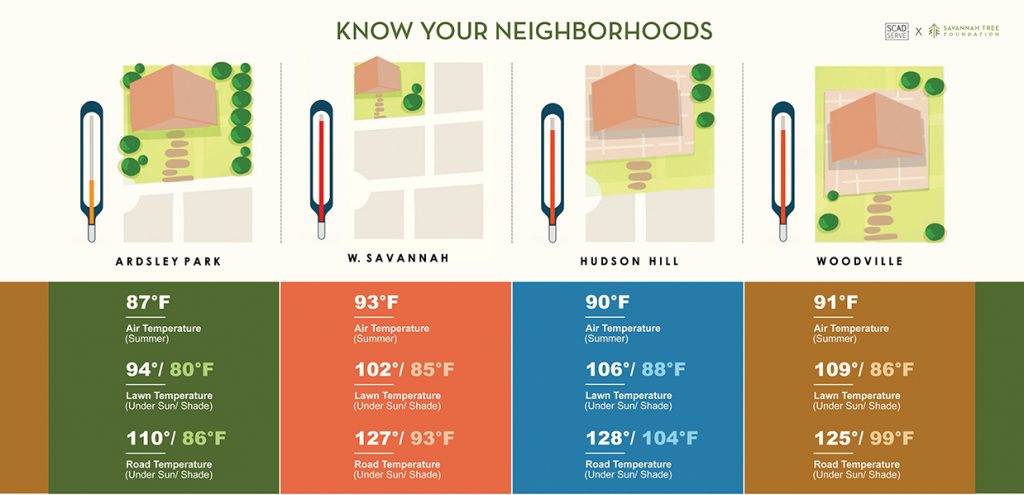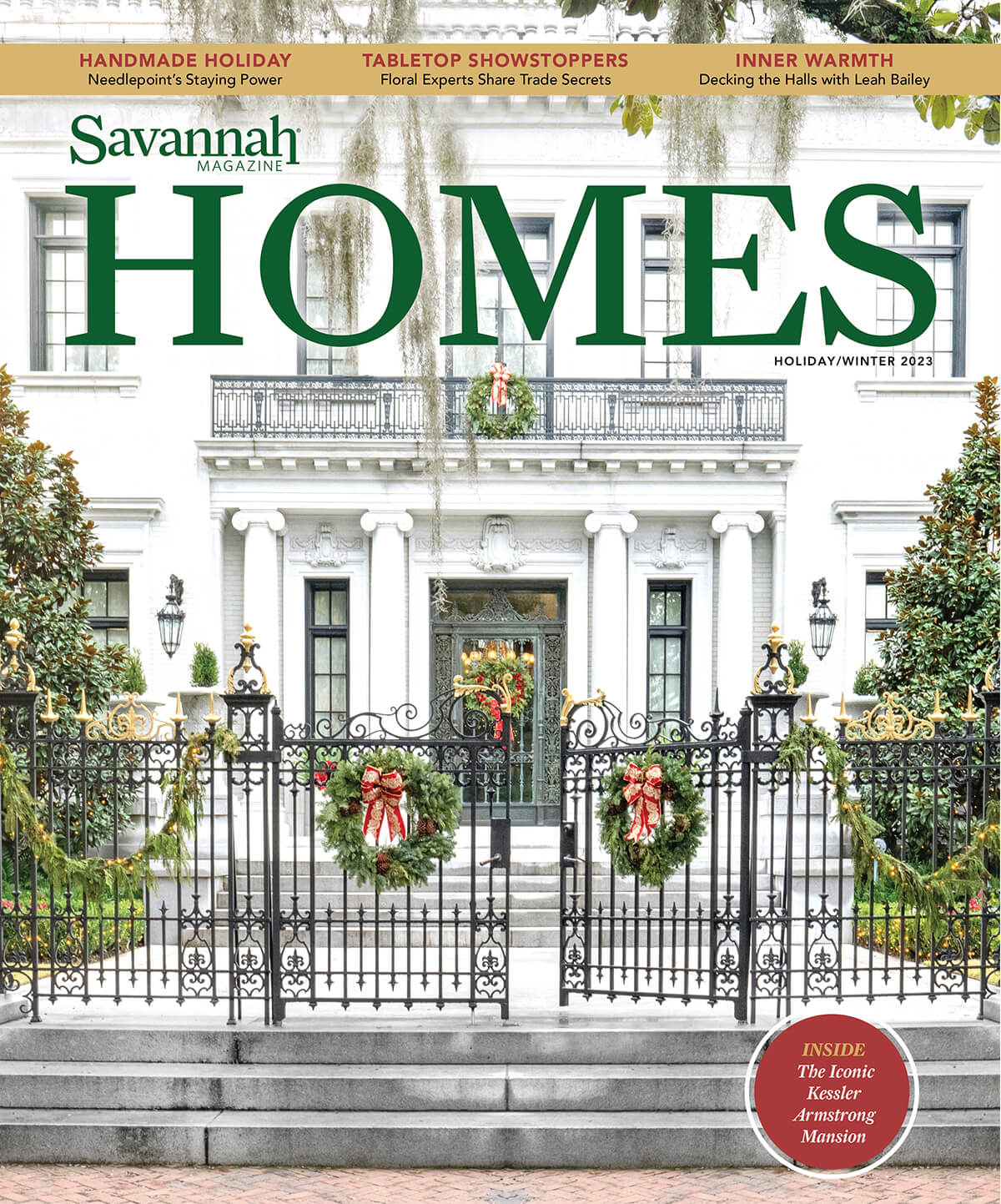SPONSORED CONTENT PRESENTED BY SAVANNAH COLLEGE OF ART AND DESIGN
SCAD students and the Savannah Tree Foundation join forces to save the city’s tree canopy
Photography courtesy of SAVANNAH COLLEGE OF ART AND DESIGN
SAVANNAH IS FAMOUS for its lush tree canopy — from majestic live oaks to magnificent magnolias and multicolored crepe myrtles. Beyond their beauty and cultural significance, the impacts of trees are far-reaching and compounding, spanning from economic benefits to health improvements to climate change resilience. Trees are woven into almost every aspect of our lives.
Savannah Tree Foundation, a local nonprofit, is charged with protecting and growing Chatham County’s urban forest. It’s a job that is getting harder every year. According to their data, Chatham County lost more than three football fields of trees a day between 1992 and 2014. Those numbers are expected to be even larger in more recent years.
The small-but-mighty team is taking on this challenge by planting trees, engaging the community and arming themselves with more data to help change people’s hearts and minds.
“Savannah Tree Foundation is a small team with big dreams,” says Executive Director Zoe Rinker. “With only three staff members to carry out all our programming, our research and messaging efforts often fall behind. We had a sense of Savannah’s tree inequity and urban heat effects from what we were seeing on the ground, but needed the data and visuals to back that up.”

In came SCAD — which, to some may seem like an unlikely partner. But SCAD’s preeminent design for sustainability program, combined with an upper-level Design for Good 560 course, is answering the call for help.
“When SCAD approached us about a potential partnership, we knew it could be a great opportunity to have SCAD join us on Savannah’s journey to tree canopy equity,” says Rinker. “We were especially excited about the class’s human-centered and collaborative design approach to generate ideas and present new solutions.”
One of the students selected for the Design for Good course is Emma Covello, who is working towards her Master of Fine Arts degree in design for sustainability. “We were able to be the ‘boots on the ground’ for data collection, interpreters of the raw numbers and [designers] of a way to convey the importance of Savannah Tree Foundation’s mission and vision,” Covello says.
This year, two classes of graduate and undergraduate students from across the country and the globe worked together to create design solutions and provide the research the foundation needs to fight for trees.
The students took extensive temperature readings in Ardsley Park and three neighborhoods on Savannah’s Westside. Every day, multiple times a day, for weeks they measured the temperature in the sun and the shade provided by trees. They also counted trees in each lot.
“Our research showed the disparities in neighborhoods facing the effects of urban heat islands and those who are benefiting greatly from a larger tree canopy,” Covello says.
The average lot in Ardsley Park has 9.1 trees, compared to 1.5 trees per lot in West Savannah. And the average temperature during the hottest part of the day in the summertime can be as much as 20 degrees hotter in West Savannah.

That is just a fraction of the research that was presented and delivered to the Savannah Tree Foundation, in the form of white papers and infographics that the nonprofit can use in presentations with stakeholders and on social media.
“In a very tangible way, the research, discussion and visualizations from the SCAD classes are already helping to shape the future of the Savannah Tree Foundation,” says Rinker. “The field data informed our fall tree planting and distribution strategy. We are already using the white papers to support transformational grant applications. This research revealed where we need to focus our tree planting efforts moving forward, and the complimenting visuals and graphics can help us spark action in our community. Both the research and visual aids will help us invite all of Savannah to join our mission to grow tree canopy for all.”
Scott Boylston is a professor in SCAD’s design for sustainability program and led this collaboration. “Communities grow best when there’s a shared understanding of the challenges facing them, a shared appreciation for what’s at the root of those challenges, and a shared commitment to improving the living conditions of everyone. We hope that the work our students have done creates a shared sense of opportunity to improve the lives of every citizen in Savannah, and provides clear direction about how that can happen. We hope the communities realize the special place trees have in their lives as a necessity as much as a luxury. We hope the city government can leverage our efforts to make Savannah more equitable and more resilient. And, we hope industries can commit to more meaningful and direct and neighborly engagement with the communities of West Savannah.”





